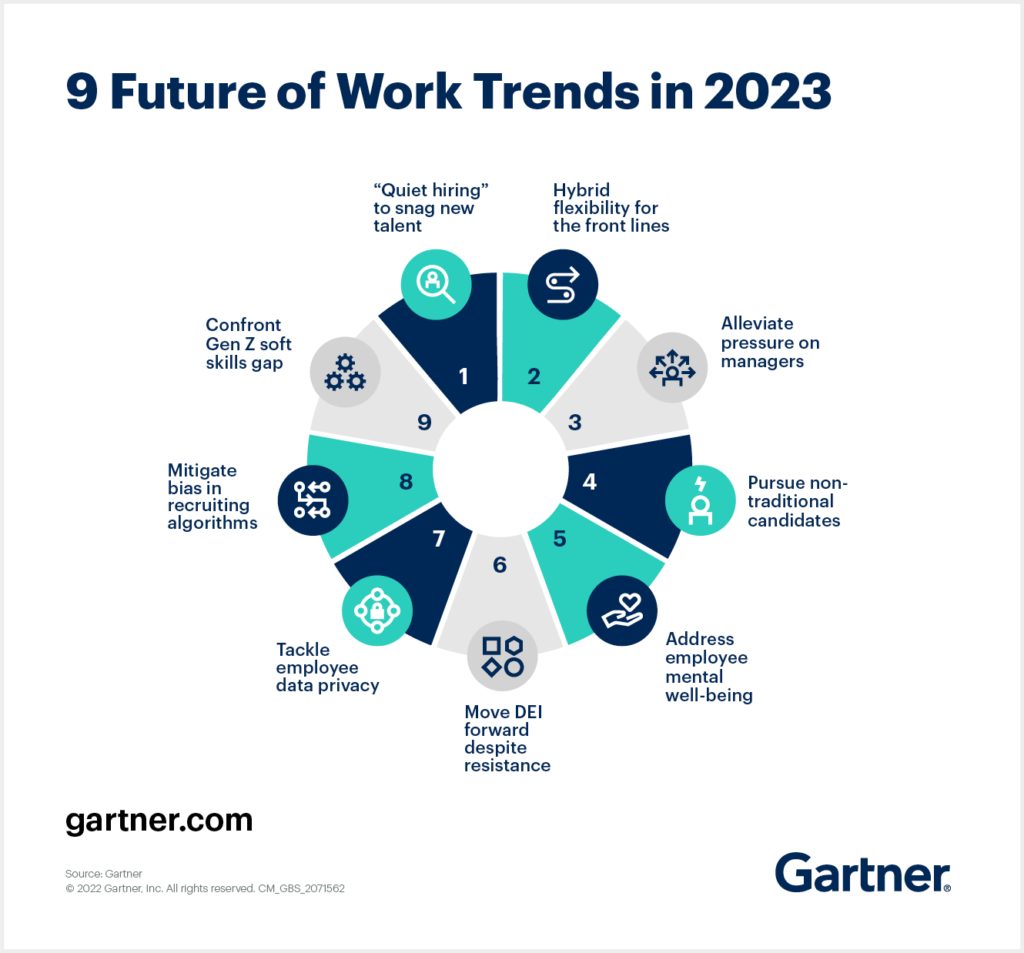2023 has dawned, shedding light on an evolving landscape of work that continues to pose new challenges. The last two years have marked a fundamental shift in how we understand and execute work, largely due to the lingering effects of the global pandemic and the acceleration of digital transformation.
Several workforce challenges have emerged, being felt by businesses worldwide. Here, we will explore these challenges and offer potential solutions to navigate this ever-evolving terrain.
Remote Work Management
Even as the world gradually moves past the COVID-19 pandemic, remote work remains a dominant trend. Companies are grappling with the challenges of managing a dispersed workforce. Communication, collaboration, employee engagement, and tracking productivity are all concerns.
Solution: Invest in robust digital tools that facilitate smooth remote operations. Implementing digital project management tools, video conferencing software, and remote employee monitoring tools can streamline workflows. Fostering a culture of open communication and regular virtual team bonding activities can also help maintain morale.
Upskilling and Reskilling
The acceleration of technology and automation has led to a significant skills gap. The demand for digital and tech-focused skills has outpaced supply, creating a need for continuous learning and development in the workforce.
Solution: Companies should prioritize investing in their employees’ professional development. By offering regular upskilling and reskilling opportunities, organizations can ensure their workforce is always equipped with the skills necessary for the digital age.
Mental Health
With the boundary between work and personal life becoming more blurred, there has been an increase in reported mental health issues among employees. The lack of physical interaction, isolation, and increased workload have all been cited as contributing factors.
Solution: Create a supportive work environment that encourages work-life balance. Mental health resources should be easily accessible, and managers should receive training to identify signs of stress and burnout in their teams.
Hiring and Retention
In the digital age, it has become more challenging to attract and retain top talent. With more companies going remote, competition has increased. Additionally, employees now place more importance on company culture, flexibility, and benefits when choosing where to work.
Solution: Companies should be proactive in promoting their employer brand and offering attractive benefits. In a remote work environment, this might mean focusing more on aspects like flexible work hours, health benefits, learning opportunities, and an inclusive culture.
Cybersecurity
With the surge in remote work, cybersecurity risks have multiplied. Companies must protect not only their own networks but also the home networks of their employees.
Solution: Invest in robust cybersecurity measures, conduct regular system updates and audits, and offer regular training sessions for employees about potential threats and how to avoid them.
Diversity and Inclusion
Despite the progress made over the years, achieving diversity and inclusion in the workplace remains a challenge. It’s no longer just a matter of fairness and equality – diverse teams are proven to be more innovative and profitable.
Solution: Companies need to establish clear policies on diversity and inclusion and implement practices such as unbiased recruitment and promotion, mentorship programs, and diversity training.
The challenges of 2023 are significant, but they also present opportunities for companies to innovate and adapt. By understanding these challenges and finding effective solutions, businesses can foster a resilient workforce that thrives in the face of change.

